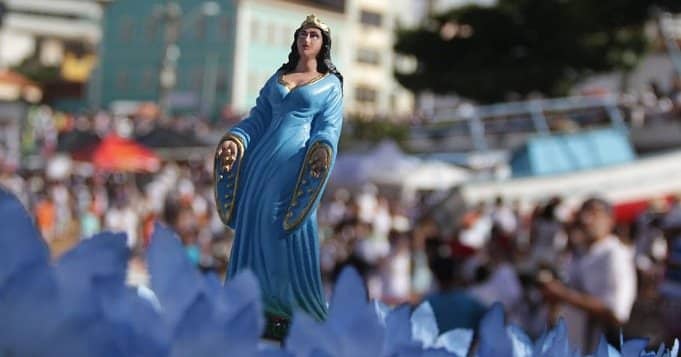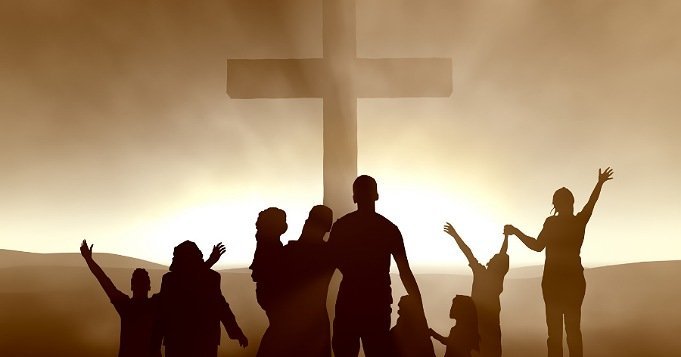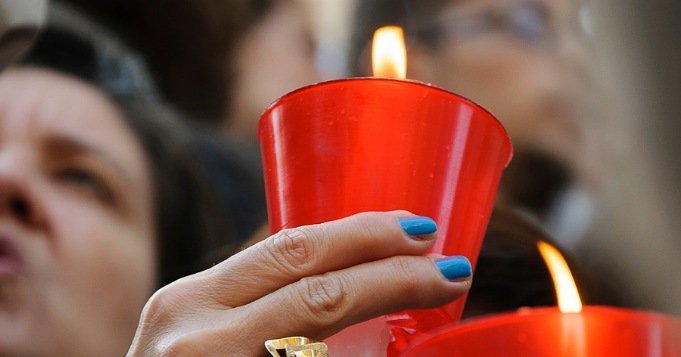
Over the years, the word pilgrimage has revealed a deep meaning of great faith. For centuries people have followed religious paths to be closer to the different deities, mainly those belonging to the Catholic religion.
Therefore, we must clarify that the pilgrimage or pilgrimage always includes a religious aspect, since it is the trip to a sanctuary or sacred place with religious characteristics.
The tour is made by believers with the aim of reaching the place of devotion of a saint to pay their respects and ask for his blessings.
Travel or pilgrimage made out of devotion to a Shrine...

The term pilgrimage comes from the Latin pilgrimage, which means trip abroad or stay abroad. But in history, little by little, the term was assigned to the route that people who wanted to reach sacred places in the religious sphere traveled generally on foot.
Today, it is also recognized as a pilgrimage to visit a chapel or place that guards sacred relics. And this is a concept that not only attends to religion, but also to culture, since the ancient settlers of America also made pilgrimages to sacred places such as Teotihuacán and Chichén Itzá.
We must clarify that the pilgrimages through the centuries include long and difficult paths that test the true faith of the devotees.
Among examples of famous pilgrimages we can point out:
- The pilgrimage, or Hajj, of the Muslim faithful to Mecca,
- The journey of the Catholic faithful to Santiago de Compostela
- The pilgrimage of the Orthodox Jews to the Temple of Jerusalem
Pilgrimages, transculturation and Cuban religion

One of the most famous pilgrimages in Cuba, carried out over the centuries, is the pilgrimage of the image of the Virgen de la Caridad del Cobre, patron saint of the island also known as "Virgen mambisa", whose figure travels almost 30 thousand kilometers throughout the entire Island in the company of her faithful.
The trip to the Sanctuary of this virgin, located in Santiago de Cuba, is also recognized as a pilgrimage.
The pilgrimage of the Virgen del Cobre is organized by the Conference of Catholic Bishops of Cuba, and always concludes with a Eucharist in the historic center of the city of Havana.
However, thousands of devotees, both Catholics and Yoruba, participate in this pilgrimage, as the Charity of Copper also founds its cult in Cuban roots with the Yoruba Goddess of Love and Rivers, the mighty Orisha Oshún. The Cubans pay homage to both.
Another example of a powerful traditional Cuban pilgrimage is the journey that thousands of people travel each year to Sanctuary of San Lázaro, in the Havana municipality of Boyeros, to celebrate the festival of the holy curator and the Orisha with whom it is syncretized, Babalu Aye, on December 17.
In this pilgrimage, many people of both Catholic and Yoruba beliefs also come together to express their devotion and fulfill promises to the holy orisha.
Of course, although these are the pilgrimages with the largest number of followers in Cuba, they are not the only ones that take place.
Many devotees to the Virgin of Regla and the protector orisha of the waters, Yemaya, they also make the pilgrimage to the Sanctuary of the Virgin of Regla, located in the town of Havana with the same name.
Other followers of the Virgin of Las Mercedes and of the Father Orisha Obbatalá They arrive at the Sanctuary dedicated to the Catholic deity in Havana, to show them their devotion and ask for their blessings.
The followers of Santa Barbara and the Orisha of Thunder ShangoThey also go to the Church loaded with red roses to offer to the saints.
Difference between Pilgrimage and Procession

The pilgrimage and the Procession They are two concepts that intertwine and share the same symbolism, but they have some differences with respect to the way in which religious activity is carried out.
While the pilgrimage can also be carried out individually; the procession always takes place in community.
The Pilgrimage is a broader concept, while the procession is more specific, seen as the ritualized part of the pilgrimage. For example, the beginning and end of the pilgrimage can become a procession.
These activities have a great spiritual meaning, it is not just a walk together, you walk to live the path with feelings of supplication, gratitude, penance, promises ...
Other sacred places in the world where they make pilgrimages.
And there are sacred places of faith of different religions to which millions of people have pilgrims for centuries, the most important are:
- The Sanctuary of Our Lady of Fatima, in Cova da Iria, Portugal.
- Sanctuary of La Salette, France.
- Basilica of Our Lady of the Rosary, Colombia
- Sanctuary of Christ the King, Portugal
- Javier Castle, Spainaña
- Basilica of Saint Therese of Lisieux, France
- Basilica of the Virgin of Caacupé, Paraguay
- Medjugorje Shrine, Bosnia and Herzegovina
- Monastery of Santo Toribio de Liébana, Spainaña
- Basilica of Our Lady of Candelaria, Spainaña
- Canterbury Cathedral, England
- Sanctuary of Divine Mercy in Krakow, Poland
- Basilica of Saint Francis of Assisi, Italy
- Basilica of Our Lady of Los Angeles, Costa Rica
- Holy child of Atocha, Mexico

3 Saints who protect children from all evil: Prayers to invoke them

March 19, Saint Joseph's Day: venerating the Patron Saint of Carpenters

A Documentary to San Lázaro that evidences the ancestral cult of the Saint

3 Stories of Saint Lazarus venerated in Cuba and his syncretism with Babalú

In Cuba, Santa Bárbara is one of the most revered Catholic Saints

Do you know these 8 Auxiliary Saints? Its Santoral and ways to protect ourselves

6 Powerful Holy Helpers From What Diseases Do They Protect Us?

2 Miraculous prayers to Saint Pantaleon: "He who has compassion on all"




